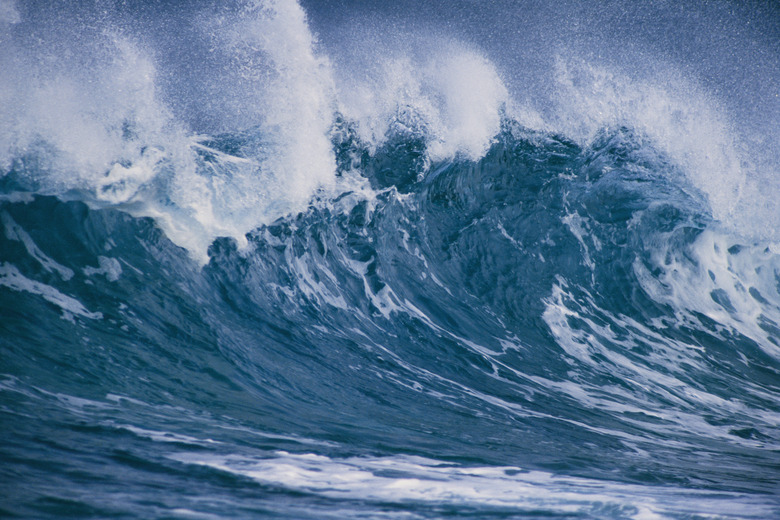How Is A Tsunami Created?
Tsunamis are natural phenomena which usually occur in conjunction with seismic activity. Tsunamis are generally described as outwardly-moving concentric waves traveling at high speeds until they reach the coastline. They vary in size and can be undetected or cause widespread destruction. The recent tsunami in Japan claimed as many as tens of thousands of lives. Tsunamis are also known as seismic sea waves. The word itself means "harbor wave" in Japanese.
Formation
Formation
Tsunamis usually begin with an earthquake under or near the ocean. They can also be caused by volcanic eruptions, nuclear explosions and in very rare cases, by meteors hitting the ocean's surface. The most common type is caused by earthquakes. In these types of tsunamis, the ocean floor is disrupted, causing a large displacement of water. The water travels outward from the point of displacement.
Travel
Travel
Tsunamis travel at extremely high speed over vast distances. They can travel as fast as 450 mph. When tsunamis occur deep at sea, the energy of the tsunami is contained over the entire depth of the ocean; on the surface there is little visible wave activity or none at all. However, under the sea, a huge pulse of energy is traveling through the water at extremely high speed. Depending on where the tsunami occurs, it can reach coastlines in as little as a few minutes to a few hours.
Shallows
Shallows
As tsunamis approach coastlines, the water becomes shallower. All of the energy spread over miles of ocean depth is concentrated into a much smaller area. The wave that was previously invisible becomes apparent on the surface of the ocean. The speed at which the tsunami wave travels slows down and the wave grows bigger as the water becomes shallower. As the tsunami approaches the coastline, it reaches its greatest height. In large tsunamis, waves can be 100 feet high.
Strike
Strike
In the final stages of a tsunami, the wave strikes the coastline. In small tsunamis, the wave is barely noticed. In larger tsunamis, there is often a small tidal surge. Sometimes, as in the case of the recent tsunami in Japan, the wave can be enormous and hit the coastline with immense force and power. The wave can travel inland for miles and destroy everything in its path. Tsunamis usually consist of more than one wave, similar to ripples on a pond. The first wave isn't always the largest.
Cite This Article
MLA
London, John. "How Is A Tsunami Created?" sciencing.com, https://www.sciencing.com/tsunami-created-8747310/. 24 April 2017.
APA
London, John. (2017, April 24). How Is A Tsunami Created?. sciencing.com. Retrieved from https://www.sciencing.com/tsunami-created-8747310/
Chicago
London, John. How Is A Tsunami Created? last modified March 24, 2022. https://www.sciencing.com/tsunami-created-8747310/
